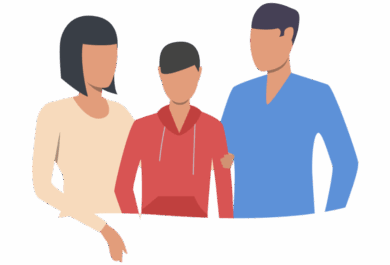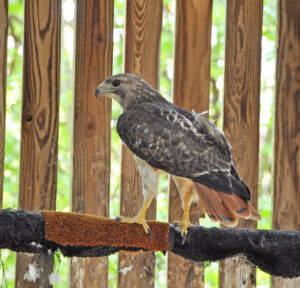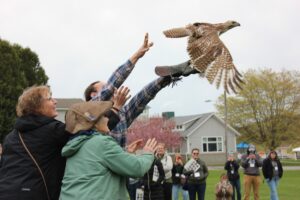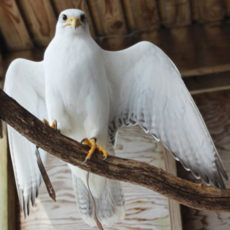Announcements

This past January, a collision with a vehicle caused a significant collarbone injury to a Red-tailed Hawk. Such incidents are a common occurrence as birds of prey frequently hunt for prey along highway medians, putting themselves at risk to oncoming cars and trucks.
 First brought to Green Chimneys’ local veterinary partner Brewster Vet Hospital, the hawk was given fluids and began its recuperation, thanks to the quick response of the veterinary team. care. As the hawk gained strength, it was able to advance to the Green Chimneys Wildlife Center. Once here, our skilled wildlife caretakers ensured the hawk had the necessary components needed to fully heal: optimal diet, clean water, and the right space based on its specific needs. Under the care of our team, with some help from Green Chimneys students, the hawk moved from a small rehab cage, which limited its movement so the collarbone could heal, to our large flight cage where it has been rebuilding endurance and strength in its wings.
First brought to Green Chimneys’ local veterinary partner Brewster Vet Hospital, the hawk was given fluids and began its recuperation, thanks to the quick response of the veterinary team. care. As the hawk gained strength, it was able to advance to the Green Chimneys Wildlife Center. Once here, our skilled wildlife caretakers ensured the hawk had the necessary components needed to fully heal: optimal diet, clean water, and the right space based on its specific needs. Under the care of our team, with some help from Green Chimneys students, the hawk moved from a small rehab cage, which limited its movement so the collarbone could heal, to our large flight cage where it has been rebuilding endurance and strength in its wings.
Each week, students have had the opportunity to participate in the hawk’s rehabilitation, witnessing the delicate care for an injured wild animal to understanding the responsibilities that come with being an active steward of nature in our community. Together, staff and students observed tremendous growth in the hawk’s healing as it now can successfully fly throughout the flight cage. And as part of the traditional close of our annual Birds of Prey Day, students will now get to see the rehabilitation process through to its highest reward…a dramatic return back to the wild. It’s an emotional moment that means even more at Green Chimneys where students learn and grow over time, acquiring the skills they’ve needed to succeed at Green Chimneys, and beyond.
Every opportunity in nature is a lesson and this story is just one of many at the Wildlife Center. This Red-tailed Hawk is the 22nd rehabilitated bird release of 2023 and now that we’re heading toward summer, rehabilitation season is getting even busier with an increase in baby songbirds. These needs will be met with a new songbird flight cage constructed by volunteers this past spring. Designed for smaller birds, the enclosure will allow for “soft releases” back into the wild via small door that can be left open for healed birds to fly off on their own.
Animal rescue and rehabilitation is a meaningful way to learn about the benefits of human-animal connection. For students who are typically the care receiver, the opportunity to step into a role as caregiver is a truly empowering experience, and Green Chimneys is a truly a place to provide that.
 Tips from Green Chimneys’ Wildlife Caretaker:
Tips from Green Chimneys’ Wildlife Caretaker:
Learn more about wildlife rescue and rehabilitation at Green Chimneys

Crowned the best for falconry in medieval times, gyrfalcons were once reserved for kings. As the largest falcon in the world, with exquisite plumage ranging from bright white to deep charcoal, gyrs are revered for their powerful skill of flight. Their long wings make hunting waterfowl from 3,000-feet-high a feasible and fantastical feat. This falcon was flown in the sport of falconry for several years.